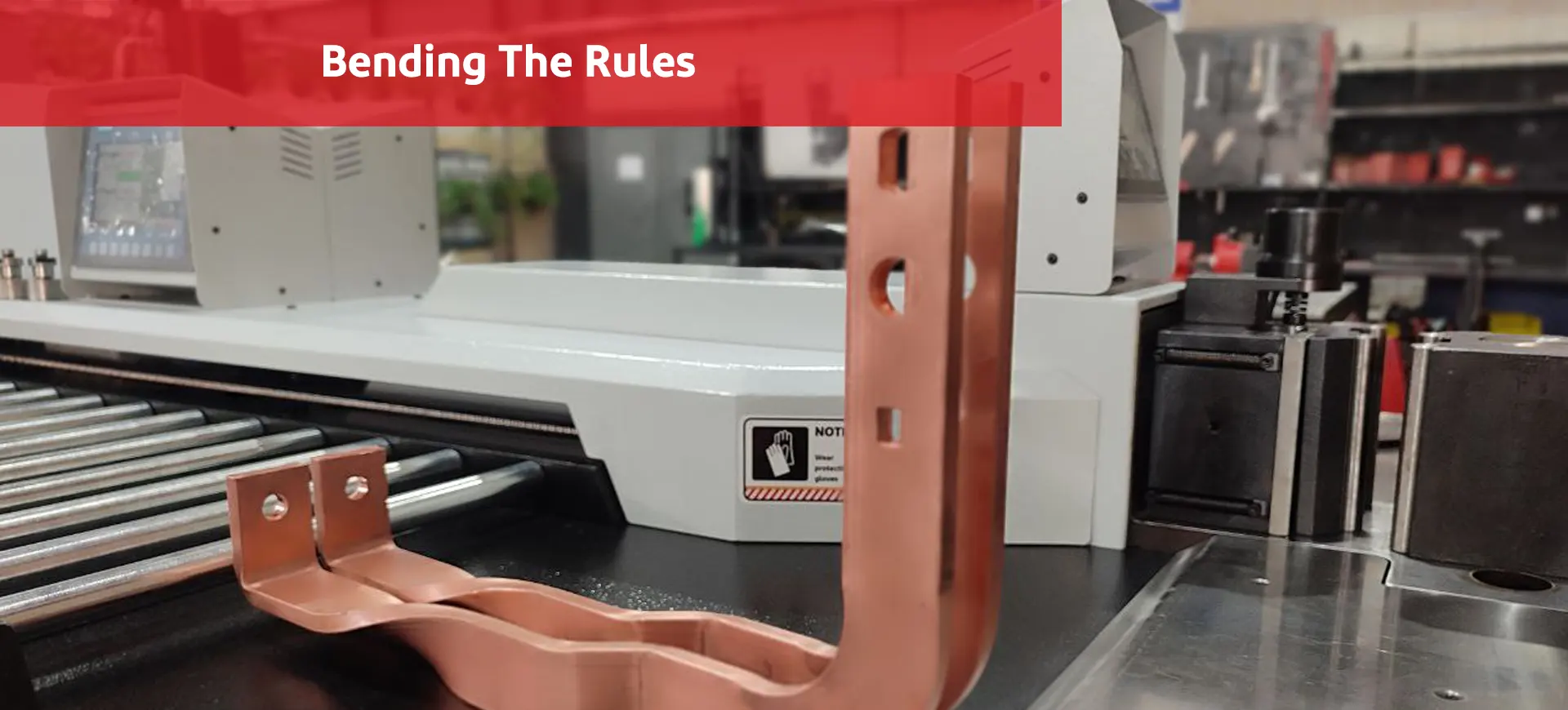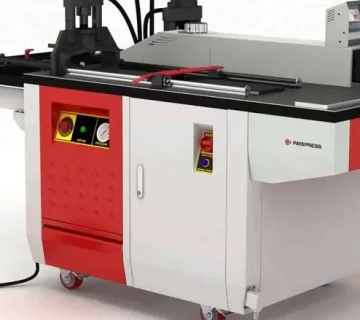In the world of electrical engineering and power distribution, busbars play a pivotal role. These essential components, typically made from copper or aluminum, serve as conduits for electricity within switchgear, transformers, and various other electrical systems. Their ability to efficiently and safely transmit power is crucial for maintaining the integrity and reliability of electrical networks. However, the true effectiveness of a busbar is heavily reliant on its design and manufacturing precision, particularly when it comes to bending. This article explores the intricate world of busbar bending , examining various techniques, technologies, and considerations that ensure optimal performance and efficiency.
Understanding Busbars and Their Importance
Busbars, or bus bars, are flat strips or bars of conductive material (often copper or aluminum) that are used to carry large currents of electricity. They are employed in a variety of electrical applications, from large power distribution systems to compact electrical panels. Their design allows for efficient power transmission, minimizing energy loss due to resistance and heat production. In addition, busbars provide a robust and flexible means of connecting electrical components, improving the overall reliability and safety of electrical systems.
The Role of Busbar Bending
Bending is a critical aspect of busbar fabrication. Properly bent busbars ensure that they fit perfectly within the confines of electrical panels or switchgear, facilitating optimal power flow and maintaining the integrity of electrical connections. Improper bends can lead to increased resistance, electrical arcing, or even system failures. Therefore, understanding and mastering busbar bending techniques is essential for engineers and manufacturers involved in electrical system design and construction.
Key Busbar Bending Techniques
Several techniques can be employed to bend busbars, each with its unique advantages and applications. Here, we explore some of the most common methods, highlighting their benefits and considerations.
Manual Busbar Bending
Manual busbar bending is a traditional method that involves using hand tools or manual bending machines to shape busbars. While it may not offer the precision or efficiency of automated techniques, manual bending is still widely used, especially in smaller-scale projects or when working with limited budgets.
Advantages of Manual Bending:
– Cost-Effective: Manual bending equipment is generally less expensive than automated machinery, making it accessible for small workshops or individual projects.
– Flexibility: Manual bending allows for greater control and adaptability, enabling engineers to make adjustments on the fly.
– Simplicity: The straightforward nature of manual bending means that it requires less training and technical expertise.
Considerations:
– Precision: Manual bending may not achieve the same level of precision as automated methods, potentially leading to inconsistencies in bend angles and radii.
– Labor-Intensive: The process can be time-consuming and physically demanding, particularly when working with thicker or harder materials.
Hydraulic Busbar Bending
Hydraulic busbar bending machines use hydraulic pressure to bend busbars with high precision and control. These machines are capable of handling a wide range of materials and thicknesses, making them ideal for medium to large-scale production environments.
Advantages of Hydraulic Bending:
– Precision and Consistency: Hydraulic busbar bender machines provide accurate and repeatable bends, ensuring uniformity across multiple busbars.
– Power and Versatility: The hydraulic system allows for the bending of thicker and harder materials that would be challenging to bend manually.
– Efficiency: Hydraulic bending is faster than manual methods, increasing productivity in high-volume manufacturing settings.
Considerations:
– Cost: Hydraulic machines can be a significant investment, requiring a higher initial outlay than manual tools.
– Maintenance: Regular maintenance is necessary to keep hydraulic systems functioning smoothly, adding to operational costs.
3-in-1 Busbar Machines
3-in-1 busbar machines combine cutting, punching, and bending functions into a single piece of equipment. These versatile machines are particularly useful in workshops with limited space and resources, offering an all-in-one solution for busbar fabrication.

Advantages of 3-in-1 Machines:
– Space-Saving: Combining multiple functions into one machine reduces the need for separate equipment, saving valuable space.
– Cost-Effective: Investing in a single machine that performs multiple tasks can be more economical than purchasing separate devices.
– Convenience: The ability to perform cutting, punching, and bending in one location streamlines the fabrication process.
Considerations:
– Complexity: While operating a 3-in-1 machine may seem complex, PAYAPRESS machines are designed with user-friendliness in mind. Intuitive controls and clear instructions make learning to use these machines a breeze, eliminating the need for extensive training.
– Capacity: PAYAPRESS 3-in-1 machines offer impressive capacity. Our 120 series can easily process up to 120*12mm busbars, while the 160 series can handle 160*15mm. For larger requirements, we can customize our machines to process up to 200*20mm busbars.
Factors to Consider in Busbar Bending
When selecting a busbar bending machine or technique, several factors should be taken into account to ensure optimal performance and efficiency:
Material and Thickness
The material and thickness of the busbar play a crucial role in determining the appropriate bending technique. Copper and aluminum are the most commonly used materials, each with unique properties that affect their bendability. Thicker busbars may require more powerful machines, such as hydraulic, to achieve precise bends without damaging the material.
Bend Radius and Angle
The desired bend radius and angle are important considerations when choosing a bending technique. Tight radii or complex bend profiles may necessitate the use of hydraulic busbar bending machines, which offer the precision and control needed to execute intricate bends accurately.
Production Volume
The scale of the project and production volume will influence the choice of bending technique. For high-volume manufacturing, automated methods like hydraulic bending are preferred due to their speed and efficiency. In contrast, manual bending may be more suitable for smaller-scale operations or custom projects with lower production demands.
Budget and Resources
Budget constraints and available resources are critical factors in determining the most appropriate bending technique. While CNC machines offer the highest precision, they also come with a higher price tag. For businesses with limited budgets, hydraulic bending may provide a more cost-effective solution.
Applications of Busbar Bending
Busbar bending is an essential process in various industries and applications, where precise and reliable power distribution is crucial. Some of the most common applications include:
Power Distribution Systems
Busbars are integral components of power distribution systems, where they facilitate the efficient transmission of electricity from power sources to end-users. Properly bent busbars ensure seamless integration within switchgear and distribution panels, minimizing energy loss and enhancing system reliability.
Transformers
In transformers, busbars are used to connect winding terminations and facilitate the flow of electricity between the primary and secondary coils. Accurate busbar bends are essential for maintaining the integrity of these connections and ensuring optimal transformer performance.
Electrical Panels
Electrical panels, including control panels and distribution boards, rely on busbars to organize and distribute electrical power. Properly bent busbars allow for efficient use of space within panels, ensuring that electrical components are neatly and securely connected.
Renewable Energy Systems
In renewable energy systems, such as solar and wind installations, busbars play a vital role in connecting power generation equipment to the grid or storage systems. Precise busbar bending ensures that these connections are reliable and efficient, maximizing the overall performance of the renewable energy system.
Conclusion
The art and science of busbar bending are critical to the success of electrical system design and construction. From manual techniques to advanced CNC technology, each bending method offers unique advantages and considerations that must be carefully evaluated to ensure optimal performance and efficiency. By understanding the nuances of busbar bending and selecting the appropriate technique for each application, engineers and manufacturers can create electrical systems that are reliable, efficient, and safe.
In the ever-evolving landscape of electrical engineering, mastering busbar bending techniques is more important than ever. As demand for efficient and reliable power distribution continues to grow, the ability to bend the rules—both literally and figuratively—will remain a key factor in the success of electrical projects worldwide.
payapress linkedin :




No comment